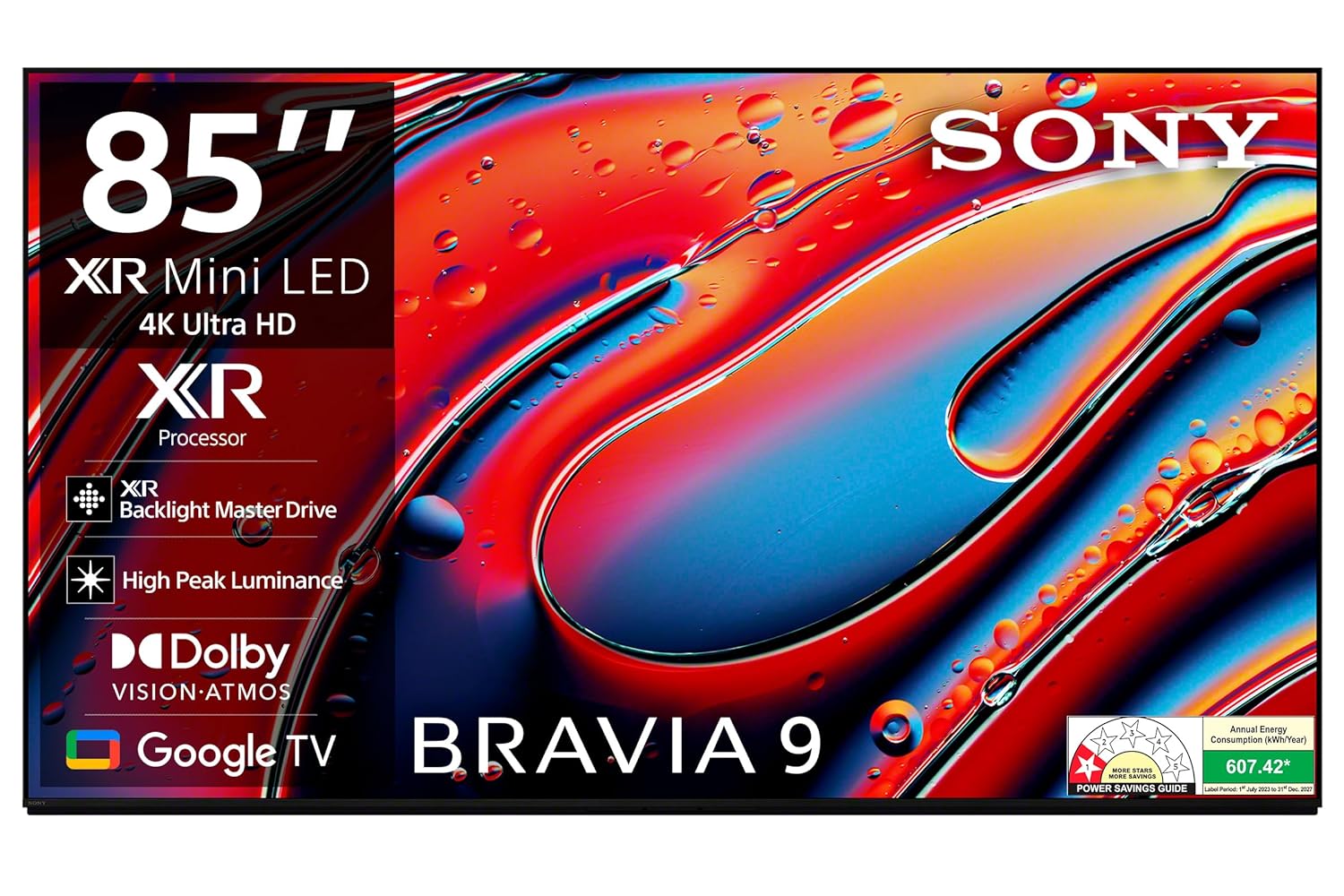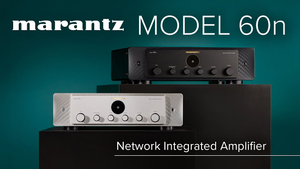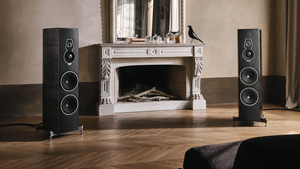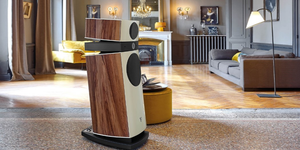
SONY Bravia 9 Mini LED In-Depth Review
Introduction: A New Challenger to the OLED Throne
In the world of high-end televisions, the narrative has long been dominated by the deep, perfect blacks of OLED technology. For years, it has been the undisputed benchmark for cinematic picture quality. In 2024, however, Sony has made a bold and strategic statement with the launch of its flagship 4K television, the Bravia 9. In a move that can only be described as a "huge gamble," Sony has placed a Mini LED television at the pinnacle of its lineup, positioning it not as a subordinate to OLED, but as a potential "next evolutionary step in panel technology". This is not merely an incremental update; it is a direct challenge to the established order, a gambit that bets overwhelming brightness and unprecedented backlight control can deliver a more compelling real-world experience than OLED's theoretical perfection.
The Bravia 9 enters a market where Sony's own A95L QD-OLED, a critical darling, remains a top contender. This dual-flagship approach is telling. It suggests Sony recognizes that the premium TV market is not monolithic. There is a clear divergence between the cinephile who demands the absolute contrast of OLED for a perfectly dark home theater and the modern user whose living room is a multi-purpose space, often flooded with daylight. The Bravia 9 is Sony's champion for the latter, aiming to be the "best of both worlds" by closing the gap on black level performance while establishing a new benchmark for brightness.

This review will dissect every facet of the Bravia 9, from its core technology to its real-world performance in bright and dark rooms. It will scrutinize its audio, gaming credentials, and smart features. Most importantly, it will place the Bravia 9 in the context of its fiercest rivals, the best OLEDs and Mini LEDs from LG and Samsung. With a premium price tag that places it among the most expensive TVs on the market, the central question is clear: does Sony's brightest gambit pay off, and is the Bravia 9 the right flagship television for you?.
Design and Build: Premium, Practical, and Purposeful
From the moment it is unboxed, the Bravia 9 exudes a sense of premium, purposeful design. Sony's "One Slate" aesthetic is on full display, presenting a sleek and sturdy television with a minimal quarter-inch bezel that virtually disappears during viewing, allowing the picture to dominate the experience. While it is unsurprisingly chunkier than its wafer-thin OLED rivals, this added depth is a necessary consequence of the complex and powerful Mini LED backlighting system housed within. The rear panel features a subtle crosshatched pattern, a signature of recent Sony designs.

SONY Bravia 9
In a nod to growing environmental consciousness, Sony has constructed a claimed 65% of the TV's body from its proprietary recycled SORPLAS material. This eco-friendly approach extends to the remote, which features a new speckled green effect, signaling its recycled origins.
The Four-Way Stand: A Triumph of Flexibility
Perhaps the most impressive aspect of the Bravia 9's physical design is its remarkably versatile stand. Comprised of two minimal, T-shaped feet, the stand addresses a common point of frustration for consumers with a simple yet brilliant piece of engineering. It offers four distinct configurations, providing a level of flexibility that is class-leading. The feet can be placed in a wide stance at the outer edges of the panel for maximum stability, or in a narrow configuration to fit on smaller media consoles. Furthermore, each position offers two height settings. A low-profile setting allows the screen to sit nearly flush with the furniture for a sleek look, while a high-profile setting elevates the panel to create ample clearance for a soundbar underneath, ensuring it doesn't block the screen or the IR sensor. This thoughtful design is a direct acknowledgment of the modern living room, where soundbars are nearly ubiquitous and furniture sizes vary wildly. It demonstrates a holistic approach to the user experience that begins with a hassle-free setup.

The Premium Eco-Remote
Complementing the high-end television is a remote control that feels equally premium. It has a comfortable heft and features buttons that are backlit, automatically illuminating when the remote is picked up. Gone are the days of disposable batteries; the remote incorporates a rechargeable battery with a modern USB-C port for quick charging. For those moments when the remote inevitably disappears into the sofa cushions, a handy "find my remote" feature is built-in, causing the remote's speaker to emit a sound. This level of thoughtful design contrasts sharply with the cheaper, non-backlit plastic remotes often supplied with competing flagship TVs, reinforcing the Bravia 9's premium positioning.

The Technology Within: XR Backlight Master Drive and Processing Power
The stunning images produced by the Bravia 9 are not the result of a single innovation, but rather a symphony of advanced hardware and intelligent software working in concert. At its core, this is a Mini LED TV, meaning it uses thousands of tiny light-emitting diodes for its backlight, grouped into hundreds or even thousands of individually controllable 'dimming zones'. However, Sony's implementation, dubbed the XR Backlight Master Drive, is what truly sets it apart from the competition.

The Power of Precision: Zones and Drivers
Sony claims the Bravia 9 features three times the number of local dimming zones as its already impressive predecessor, the X95L. While the company remains guarded about the precise figures, hands-on counts suggest the 75-inch model contains approximately 1920 independent dimming zones. This high zone count is crucial for minimizing the "halo" or blooming effect that can plague lesser backlit TVs.
However, the raw number of zones is only half the story. The true innovation lies in how they are controlled. The Bravia 9 utilizes a new, highly miniaturized 22-bit LED driver, a significant leap from the 10- or 12-bit drivers typically found in other televisions. This exponential increase in bit depth allows for far more granular and precise control over the brightness level within each individual zone. It is this unparalleled level of control, rather than just the zone count itself, that is the primary cause of the Bravia 9's ability to place searingly bright highlights directly alongside deep, dark backgrounds with an almost complete absence of light bleed. This engineering focus on the quality of dimming, not just the quantity, is a hallmark of Sony's approach.

The Brains of the Operation: The XR Processor
This sophisticated backlight hardware is governed by Sony's powerful XR Processor. This processor acts as the brain of the television, running the advanced dimming algorithms that analyze the picture in real-time to tell each of the thousands of LEDs precisely how bright to be. The XR Processor is also responsible for Sony's widely acclaimed picture processing, including XR Clear Image 4K upscaling, which expertly cleans and sharpens lower-resolution content, and XR Motion Clarity, which ensures fast-moving action in sports and movies remains smooth and clear without introducing the dreaded "soap opera effect".

| Feature | Specification |
| Panel Type | VA (QD) LCD with Mini-LED Backlight |
| Resolution | 4K (3840 x 2160) |
| Processor | Sony XR Processor |
| Backlight Tech | XR Backlight Master Drive with 22-bit driver |
| Dimming Zones (Est. 75") | ~1920 |
| HDR Support | Dolby Vision, HDR10, HLG |
| Audio System | 70W 2.2.2 channel Acoustic Multi-Audio+ |
| Smart Platform | Google TV |
| HDMI 2.1 Ports | 2 (out of 4 total) |
| Gaming Features | 4K/120Hz, VRR, ALLM, Perfect for PS5 |
| Tuner | ATSC 3.0 (NextGen TV) |
Picture Quality Analysis: A Masterclass in Light Control
All the technology under the hood culminates in what truly matters: the on-screen image. The Bravia 9 delivers a picture that is, in many scenarios, simply breathtaking. Its performance is best understood by examining it in the two environments where most televisions are used: the bright, everyday living room and the dark, cinematic home theater.

The Bright Room Champion
This is where the Bravia 9 unequivocally earns its flagship status. It is engineered to excel in imperfect, real-world viewing conditions. Its most potent weapon is its immense brightness. With measured peak HDR brightness reaching a searing 2,440 nits on an 18% window, it has more than enough power to produce a punchy, vibrant image that cuts through even significant ambient light. This makes it an exceptional choice for daytime sports, where bright, full-screen images are common, and for general viewing in sunlit rooms.
This raw power is complemented by two crucial screen technologies. The X-Anti Reflection layer is remarkably effective, heavily mitigating distracting glare from windows and overhead lights—a significant advantage over many competing TVs, including glossy OLEDs which can act like a dark mirror. Additionally, Sony's X-Wide Angle technology helps the picture retain its color and contrast when viewed from off-center seats. While the laws of physics mean it cannot quite match the perfect viewing angles of an OLED, it performs admirably for an LCD-based TV, making it a more sociable screen for family movie nights.

The Cinematic Contender
When the lights go down, the Bravia 9 continues to impress, mounting a formidable challenge to OLED's home turf. The precision of the XR Backlight Master Drive delivers black levels that are profoundly deep for a backlit television, getting remarkably close to the perfect blacks of OLED. This results in a powerful, high-contrast image with a fantastic sense of depth. Blooming and halo effects are kept to an absolute minimum, even in notoriously difficult scenes like white text on a black background or starfields in space.
For High Dynamic Range (HDR) content, the TV's brightness is a spectacular asset. It renders "dazzling" and "stunningly bright" highlights, revealing subtle details in the brightest parts of the image—like the sun or explosions—that less capable displays might "clip" or wash out. This is paired with Sony's signature color science, which favors a natural, balanced, and cinematically authentic presentation over the sometimes oversaturated "pop" of rivals. Combined with world-class upscaling and motion handling, the result is a clean, detailed, and deeply engaging cinematic experience.

Potential Pitfalls
No television is perfect, and the Bravia 9 is not without its quirks. Initial reviews noted some firmware bugs that caused distracting fluctuations in the backlight's brightness, though these issues were reportedly addressed in subsequent software updates. The out-of-the-box picture modes can also be "fussy." The 'Professional' mode, while technically the most accurate, is often too dark for most content and viewing environments, requiring users to spend some time in the settings menus to achieve the best results. Finally, in some very specific bright-room conditions, the anti-reflective screen coating that works so well against direct glare can cause the deepest blacks to appear a touch grey.
Audio Performance: Beyond the Built-in Standard
In an era where the audio performance of ultra-thin televisions is often an afterthought, making a separate soundbar a near-mandatory purchase, Sony has invested heavily in the Bravia 9's integrated sound system. The goal is clear: to provide a premium audio experience right out of the box that justifies the television's flagship status.

Acoustic Multi-Audio+ Explained
The Bravia 9 features a 70-watt, 2.2.2-channel speaker system. The key technology is Acoustic Multi-Audio+, which goes beyond the typical pair of downward-firing speakers. It incorporates "frame tweeters" on the sides of the TV and "beam tweeters" on the top edge. This sophisticated array allows sound to be positioned more accurately on the screen, so that dialogue appears to come directly from the actors' mouths, and sound effects track the on-screen action. The result is a far more spacious and immersive soundstage than standard TV speakers can produce.

Dolby Atmos and Height Effects
The two upward-firing beam tweeters are not just for show; they are specifically designed to reproduce the height channels in a Dolby Atmos soundtrack. During setup, the TV can calibrate these speakers to the room's acoustics, and the effect is genuinely impressive. Sound effects like rain or passing aircraft gain a convincing sense of verticality, adding a new dimension to the audio experience that sets the Bravia 9 apart from most of its competition.
Clarity vs. Weight
The consensus among reviewers is that the Bravia 9's sound is very good by television standards, marked by excellent clarity and a wide, spacious presentation. However, a recurring critique is that while the sound is always clean and controlled, it lacks the low-end "weight" and deep bass impact of a dedicated soundbar with a subwoofer. For those invested in the Sony ecosystem, the TV also features Acoustic Center Sync, which allows it to function as the center channel speaker in a compatible Sony soundbar system, ensuring perfect dialogue synchronization. This robust audio package aims to make a mid-range soundbar redundant, increasing the TV's overall value proposition.
Gaming and Smart Interface: A Story of Excellence and Frustration
The user experience of a modern television extends far beyond picture and sound. It encompasses the ease of navigating its smart interface and its capabilities as a gaming display. In these areas, the Bravia 9 presents a stark contrast: a smooth, feature-rich software experience hampered by a frustrating hardware limitation.

The Google TV Experience
The Bravia 9 runs the Google TV operating system, which is widely regarded as one of the best smart platforms available. The interface is clean, smooth, and easy to navigate, offering access to a comprehensive library of streaming apps. It also provides excellent smart home integration with support for Google Assistant, Amazon Alexa, and Apple HomeKit. Unlike some rival platforms, it does not bombard the user with intrusive ads. However, it is worth noting that several reviewers reported the user interface can occasionally feel "sluggish," particularly when navigating deep into the settings menus.

The Gamer's Credentials
For gamers, the Bravia 9 offers a strong suite of features. It supports all the key next-generation technologies, including 4K resolution at 120Hz, Variable Refresh Rate (VRR) to eliminate screen tearing, and Auto Low Latency Mode (ALLM) which automatically switches the TV to its fastest setting when a game is detected. For PlayStation 5 owners, the "Perfect for PS5" feature automatically calibrates HDR settings for an optimal picture. Input lag is good, measuring around 11 milliseconds, which is responsive enough for all but the most competitive professional gamers. Furthermore, as a Mini LED TV, it is immune to the risk of permanent image retention or "burn-in" from static game elements like health bars and mini-maps, a concern that still lingers for some OLED users.
The Achilles' Heel: Two HDMI 2.1 Ports
Despite its strong gaming performance, the Bravia 9 is saddled with a significant, almost baffling, hardware limitation: it has only two HDMI 2.1 ports, while its main competitors from LG and Samsung offer four. This is a critical flaw in a premium 2024 television. The problem is compounded by the fact that one of those two high-bandwidth ports is also the designated eARC port, which is required to send high-quality audio to a modern soundbar or AV receiver.
This leaves a user with a soundbar and two next-generation consoles—a very common setup for serious enthusiasts—with only one available HDMI 2.1 input. This forces them into the frustrating chore of constantly swapping cables or purchasing a third-party HDMI switch, a compromise that should be entirely unnecessary at this price point. This single design choice is the Bravia 9's most significant weakness and a potential deal-breaker for a large segment of the high-end market. It suggests a narrow focus on a user with only a PlayStation 5, effectively ceding the hardcore, multi-platform gaming audience to its better-equipped rivals.

The Competitive Gauntlet: Bravia 9 vs. The Rivals
No television exists in a vacuum. A purchasing decision, especially at the flagship level, requires a clear understanding of the competition. The Bravia 9 faces formidable rivals that force consumers to make a conscious choice about their priorities, as the era of a single "best TV" has given way to an age of specialized excellence.
Mini LED vs. OLED: The Bravia 9 vs. The LG G4
This is the central technological battle. The Bravia 9's key advantage is its raw brightness and bright-room performance. It can produce a significantly brighter full-screen image, and its X-Anti Reflection screen is more effective at combating glare, making it the superior choice for daytime viewing in a multi-purpose living room. The LG G4 OLED, while brighter than its predecessors, cannot match the sheer light output of the Sony. However, in a dark or dimly lit room, the G4's OLED panel gives it a theoretical advantage with its perfect, pixel-level blacks, infinite contrast, and flawless viewing angles. For serious gamers, the LG G4 is the clear winner, offering four full-spec HDMI 2.1 ports, support for 144Hz PC gaming, and even lower input lag. The choice is a classic trade-off: the Bravia 9 for bright-room versatility, the G4 for dark-room perfection and gaming supremacy.

The Mini LED Showdown: The Bravia 9 vs. The Samsung QN90D
When compared to its direct Mini LED competitor, the differences are more nuanced but equally important. The Samsung QN90D's most significant advantage is, once again, connectivity. With four HDMI 2.1 ports, it is by far the better choice for gamers with multiple consoles and a PC. The two TVs also fall on opposite sides of the HDR format war. The Bravia 9 supports Dolby Vision, the most popular advanced HDR format used by streaming giants like Netflix and Disney+. The Samsung QN90D, like all Samsung TVs, eschews Dolby Vision in favor of the competing HDR10+ format. In terms of picture philosophy, Sony is generally lauded for its natural, cinematic processing that aims for reference accuracy out of the box, whereas Samsung often provides a more vibrant, dazzling image that some may find more immediately impressive but less authentic. The QN90D is the more versatile, gamer-friendly Mini LED, while the Bravia 9 appeals to the home theater purist who values Sony's processing and Dolby Vision support above all else.

The Sibling Rivalry: The Bravia 9 vs. The Sony Bravia 8 (OLED)
Interestingly, one of the Bravia 9's main competitors comes from within Sony's own lineup. For a very similar price, consumers can opt for the Bravia 8 OLED. This choice crystallizes Sony's market strategy. The Bravia 8 will deliver the superior contrast, pixel-perfect blacks, and cinematic "pop" that OLED is known for in a dark room. The Bravia 9, in contrast, offers overwhelming brightness and superior performance in well-lit spaces. Sony is not declaring one technology superior to the other; instead, it is offering two distinct paths to a premium experience, tailored for different users and different living rooms.

| Feature | Sony Bravia 9 | LG G4 OLED | Samsung QN90D |
| Technology | Mini LED | OLED | Mini LED |
| Peak Brightness (HDR) | Exceptional (~2400 nits) | Very High (~1500 nits) | High (~2600 nits) |
| Black Level/Contrast | Excellent (Near-OLED) | Perfect (Infinite) | Excellent |
| HDMI 2.1 Ports | 2 | 4 | 4 |
| Key HDR Support | Dolby Vision | Dolby Vision | HDR10+ |
| Gaming Advantage | Good (PS5 Integration) | Best (4 ports, 144Hz) | Excellent (4 ports, 144Hz) |
| Bright Room Performance | Best in Class | Very Good | Excellent |
| Price (MSRP, 65") | Premium (~$3,300) | Premium (~$3,400) | High (~$2,700) |
The Final Verdict: Who Should Buy the Sony Bravia 9?
The Sony Bravia 9 is a television of spectacular achievements and significant compromises. It is, without question, a triumph of engineering and arguably the best Mini LED television ever made. It pushes the boundaries of what a backlit display can achieve, offering a legitimate and compelling alternative to OLED. Its phenomenal brightness, class-leading reflection handling, and sophisticated image processing create a viewing experience that is simply stunning in the right conditions. However, its premium price and baffling connectivity limitations mean it is not a universal recommendation. The decision to buy a Bravia 9 comes down to a clear-eyed assessment of your personal priorities.
Buy the Bravia 9 If...
Your living room is bright, and you do a lot of daytime viewing. For sports fans, news watchers, and anyone whose primary viewing happens with the curtains open and the lights on, the Bravia 9's performance is second to none. It is the undisputed king of the bright room.
You are a movie lover who prioritizes cinematic image processing and Dolby Vision support. If your main concern is the most accurate, natural, and detailed picture for films and high-quality streaming, and you primarily use a single gaming console like a PS5, the Bravia 9 will reward you with a reference-level image.
You value an integrated, high-quality audio experience and a clean setup. If the idea of a mandatory soundbar is unappealing, the Bravia 9's capable built-in sound system provides a more complete, all-in-one premium package than most of its rivals.
Look Elsewhere If...
You are a serious gamer with multiple next-generation devices. If your setup includes a PS5, an Xbox Series X, and a soundbar, the two-HDMI-2.1-port limit will be a constant source of frustration. The LG G4 or Samsung QN90D are far better, more future-proof choices for you.
Your primary viewing is in a dedicated, light-controlled home theater. In a pitch-black environment, the subtle advantages of OLED—perfect blacks, infinite contrast, and flawless viewing angles—will provide a more immersive and technically perfect cinematic experience. An OLED like the LG G4 or Sony's own A95L would be a better fit.
You are on a tighter budget. The Bravia 9 commands a significant premium. Other excellent Mini LED TVs from brands like Hisense and TCL can deliver a large portion of its performance for a substantially lower price, representing better value for many consumers.
In conclusion, the Sony Bravia 9 is a specialized masterpiece. It is an uncompromising execution of a very specific vision: to deliver the most impactful and versatile picture in the bright, modern living rooms where most people actually live. For the user whose needs align with that vision, it is a phenomenal, category-defining television. But its compromises are just as significant as its strengths, making it essential for prospective buyers to understand exactly what they are—and are not—getting for their considerable investment.







Comments